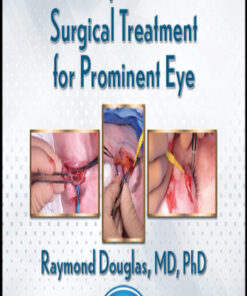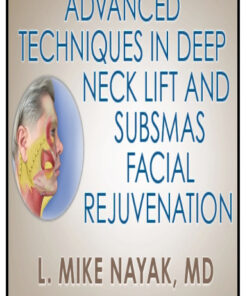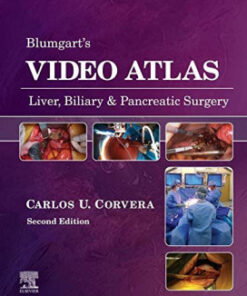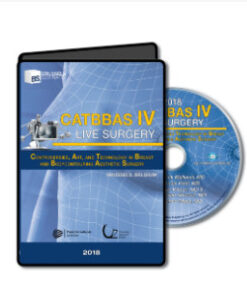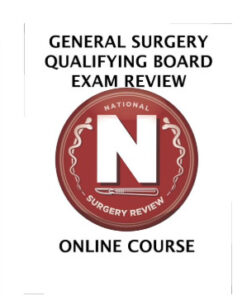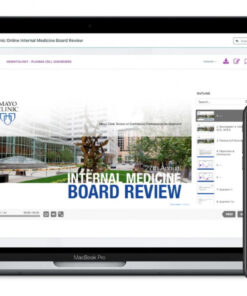Exploring the Benefits of Video Surgery: A Guide to Minimally Invasive Procedures
Discover the Benefits of Video Surgery Today!
Video surgery is a revolutionary new technology that allows surgeons to perform complex procedures with greater accuracy and precision. With video surgery, surgeons can see inside the body in real-time, allowing them to make more informed decisions about how to proceed with a procedure. This technology also reduces the risk of complications and improves patient outcomes. Video surgery has been used successfully in many different types of surgeries, including orthopedic, cardiovascular, and dental procedures. It can be used to diagnose and treat conditions such as cancer, heart disease, and other serious illnesses. The technology also helps reduce recovery time and improve patient satisfaction. If you’re looking for a way to improve your surgical outcomes and reduce the risk of complications, then video surgery may be the right choice for you. To learn more about this innovative technology, visit DentalBooks.net today.
Dental Books
Surgery Ebooks
ANESTHESIA BOOK
UROLOGIC SURGERY
PLASTIC & RECONSTRUCTIVE SURGERY
QMP Blepharoptosis: Evaluation and Surgical Repair Techniques 2022 (CME VIDEOS)
PLASTIC & RECONSTRUCTIVE SURGERY
HEAD AND NECK SURGERY & OTOLARYNGOLOGY
2022 Top Teachers in Head & Neck, Brain and Spine Imaging (CME VIDEOS)
ANESTHESIA BOOK
HEAD AND NECK SURGERY & OTOLARYNGOLOGY
QMP Aesthetic, Customized Surgical Treatment for Prominent Eye 2021 (CME VIDEOS)
HEAD AND NECK SURGERY & OTOLARYNGOLOGY
QMP Comprehensive Facial Rejuvenation: Advanced Techniques and Applied Anatomy 2022 (CME VIDEOS)
HEAD AND NECK SURGERY & OTOLARYNGOLOGY
QMP Advanced Techniques in Deep Neck Lift & SubSMAS Facial Rejuvenation 2022 (CME VIDEOS)
Neurosurgery Books
Congress of Neurological Surgeons Annual Meeting 2021 (CME VIDEOS)
GENERAL SURGERY
Neurosurgery Books
GASTROINTESTINAL SURGERY BOOK
2019 Live Surgery With Enrico Robotti Open Rhinoplasty Course
GASTROINTESTINAL SURGERY BOOK
Blumgart’s Video Atlas: Liver, Biliary & Pancreatic Surgery 2nd Edition PDF Original & Video
PLASTIC & RECONSTRUCTIVE SURGERY
Advances in Corneal Neurotization, Facial Reinnervation, and Eyelid Plastic Surgery (CME VIDEOS)
ORTHOPAEDICS SURGERY
123Sonography MSK Ultrasound Foot and Ankle BachelorClass (Videos+Quiz)
HEAD AND NECK SURGERY & OTOLARYNGOLOGY
GASTROINTESTINAL SURGERY BOOK
Video Surgery
Video Surgery
Video Surgery
Video Surgery
Video Surgery
Video Surgery
Introduction
Video surgery, also known as minimally invasive surgery, is a revolutionary new approach to surgical procedures that offers many benefits over traditional open surgery. This guide will explore the advantages of video surgery and provide an overview of the different types of minimally invasive procedures available. From shorter recovery times to reduced risk of infection, video surgery can be a great option for those looking to minimize the risks associated with traditional surgery. With this guide, you'll gain a better understanding of the potential benefits of video surgery and how it can help you achieve your desired outcome.
Overview of Video Surgery: What is it and How Does it Work?
Video surgery, also known as laparoscopic or minimally invasive surgery, is a type of surgical procedure that uses small incisions and specialized instruments to perform operations. It is a relatively new form of surgery that has revolutionized the way many surgeries are performed.
Video surgery is a type of surgery that uses a camera and specialized instruments to perform operations through small incisions in the body. The camera is inserted into the body through a small incision and transmits images to a monitor in the operating room. This allows the surgeon to see inside the body without having to make large incisions. The specialized instruments used in video surgery are designed to be inserted through the same small incision and manipulated by the surgeon to perform the operation.
The benefits of video surgery are numerous. Because the incisions are much smaller than those used in traditional open surgery, there is less trauma to the body and a faster recovery time. Video surgery also reduces the risk of infection and other complications associated with larger incisions. Additionally, because the surgeon can see inside the body more clearly, they can perform more precise operations with fewer mistakes.
Video surgery is used for a variety of procedures, including gallbladder removal, hernia repair, appendectomy, and hysterectomy. It is also used for some types of cancer surgery, such as prostatectomy and gastrectomy. In addition, video surgery is often used to diagnose and treat conditions such as endometriosis and ovarian cysts.
Video surgery is a safe and effective way to perform many types of operations. It is important to discuss the risks and benefits of this type of surgery with your doctor before undergoing any procedure.
Advantages of Video Surgery: Reduced Recovery Time and Less Pain
Video surgery, also known as minimally invasive surgery, is a revolutionary medical procedure that has revolutionized the way surgeons perform operations. This type of surgery involves the use of tiny cameras and specialized instruments to perform complex surgical procedures with minimal invasion of the body. The advantages of video surgery are numerous, but two of the most significant benefits are reduced recovery time and less pain.
The primary advantage of video surgery is that it requires much less invasion of the body than traditional open surgery. Instead of making large incisions, surgeons make several small incisions in order to access the area of the body that needs to be operated on. This means that the patient experiences less trauma and discomfort during the procedure, and the recovery time is significantly shorter. In addition, because the incisions are smaller, there is less risk of infection and scarring.
Another major benefit of video surgery is that it causes less pain for the patient. Traditional open surgery often requires general anesthesia, which can cause significant discomfort and pain. With video surgery, however, the patient is usually only given local anesthesia, which numbs the area of the body being operated on. This greatly reduces the amount of pain experienced by the patient during the procedure.
In addition to reducing recovery time and pain, video surgery also offers other advantages. For example, it allows surgeons to operate on areas of the body that would otherwise be difficult or impossible to reach with traditional open surgery. It also allows surgeons to perform more precise and delicate operations, which can result in better outcomes for the patient.
Overall, video surgery is an incredibly beneficial medical procedure that offers many advantages over traditional open surgery. By reducing recovery time and pain, it makes the surgical experience much more comfortable and efficient for both the patient and the surgeon.
Types of Minimally Invasive Procedures Performed with Video Surgery
Minimally invasive video surgery is a type of medical procedure that uses advanced technology to perform operations with minimal disruption to the body. This type of surgery is becoming increasingly popular due to its many benefits, including shorter recovery times, less pain and scarring, and fewer complications.
Video surgery is performed using a tiny camera called an endoscope, which is inserted into the body through a small incision. The endoscope transmits images of the surgical site to a monitor, allowing the surgeon to view the area in detail. The surgeon then uses specialized instruments to perform the operation.
There are several types of minimally invasive video surgery procedures available. These include laparoscopic surgery, which is used to treat conditions such as gallbladder disease, hernias, and appendicitis; arthroscopic surgery, which is used to repair joint damage; and thoracoscopic surgery, which is used to diagnose and treat lung diseases.
In addition to these common procedures, video surgery can also be used for more complex operations, such as heart valve replacement, organ transplantation, and spinal fusion. Video surgery can also be used to remove tumors or cysts, repair blood vessels, and perform reconstructive plastic surgery.
The advantages of video surgery over traditional open surgery are numerous. Because the incisions are much smaller, there is less risk of infection and less pain and scarring. Recovery time is also significantly shorter, and patients can often return home the same day. In addition, video surgery allows surgeons to operate with greater precision, reducing the risk of complications.
Overall, minimally invasive video surgery is a safe and effective way to perform many types of operations. It offers patients a number of benefits, including shorter recovery times, less pain and scarring, and fewer complications. As technology continues to improve, this type of surgery will become even more widely used in the future.
Preparing for Video Surgery: Pre-Operative Considerations
Preparing for video surgery is a complex process that requires careful consideration of pre-operative factors. Video surgery, also known as telesurgery or robotic surgery, is a minimally invasive procedure that uses advanced technology to allow surgeons to perform operations from remote locations. This type of surgery has many advantages, including improved accuracy and precision, reduced risk of infection, and shorter recovery times. However, it also requires careful preparation to ensure the best possible outcome.
Before undergoing video surgery, patients should discuss their medical history with their doctor. This includes any existing conditions, medications, allergies, and previous surgeries. It is important to provide accurate information so that the surgeon can determine if video surgery is an appropriate option. Additionally, the patient should be aware of any potential risks associated with the procedure.
The patient should also receive detailed instructions on how to prepare for the surgery. This may include fasting for several hours before the procedure, avoiding certain medications, and abstaining from alcohol and tobacco use. The patient should also be aware of any special equipment that may be needed during the surgery, such as a camera or monitor.
In addition to physical preparation, the patient should also be mentally prepared for the procedure. This includes understanding the risks and benefits of the surgery, as well as being aware of the potential side effects. The patient should also be aware of the expected recovery time and any post-operative care that may be necessary.
Finally, the patient should be aware of the cost of the procedure. Video surgery is typically more expensive than traditional surgery, so it is important to understand the financial implications before proceeding.
By taking the time to consider these pre-operative factors, patients can ensure that they are fully prepared for video surgery. This will help to maximize the chances of a successful outcome and minimize the risk of complications.
Post-Operative Care After Video Surgery: Tips for a Smooth Recovery
Post-operative care after video surgery is an important part of the recovery process. Video surgery, also known as laparoscopic or minimally invasive surgery, is a type of surgery that uses small incisions and specialized instruments to perform the procedure. This type of surgery has many benefits, including less pain, shorter hospital stays, and faster recovery times. However, it is still important to take proper post-operative care to ensure a smooth recovery.
The first step in post-operative care after video surgery is to follow your doctor’s instructions. Your doctor will provide you with specific instructions on how to care for yourself after the procedure. These instructions may include taking medications, avoiding certain activities, and getting plenty of rest. It is important to follow these instructions closely to ensure a successful recovery.
It is also important to keep the surgical site clean and dry. You should avoid getting the area wet or exposing it to dirt or debris. If you have stitches, you should keep them clean and dry as well. You should also avoid any strenuous activity or lifting heavy objects until your doctor gives you the okay.
You should also watch for signs of infection. Signs of infection can include redness, swelling, pain, or discharge from the surgical site. If you experience any of these symptoms, contact your doctor immediately.
Finally, it is important to eat a healthy diet and get plenty of rest. Eating a balanced diet will help your body heal and recover more quickly. Getting enough rest will also help your body heal and reduce the risk of complications.
Post-operative care after video surgery is an important part of the recovery process. Following your doctor’s instructions, keeping the surgical site clean and dry, watching for signs of infection, eating a healthy diet, and getting plenty of rest are all important steps to ensure a smooth recovery.
Conclusion
Video surgery is a revolutionary technology that has revolutionized the way minimally invasive procedures are performed. It offers many benefits, including improved patient safety, shorter recovery times, and reduced costs. Video surgery also allows surgeons to perform complex procedures with greater precision and accuracy. With its many advantages, video surgery is becoming increasingly popular among medical professionals and patients alike. As the technology continues to evolve, it is likely that more and more people will benefit from its use in the future.










